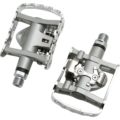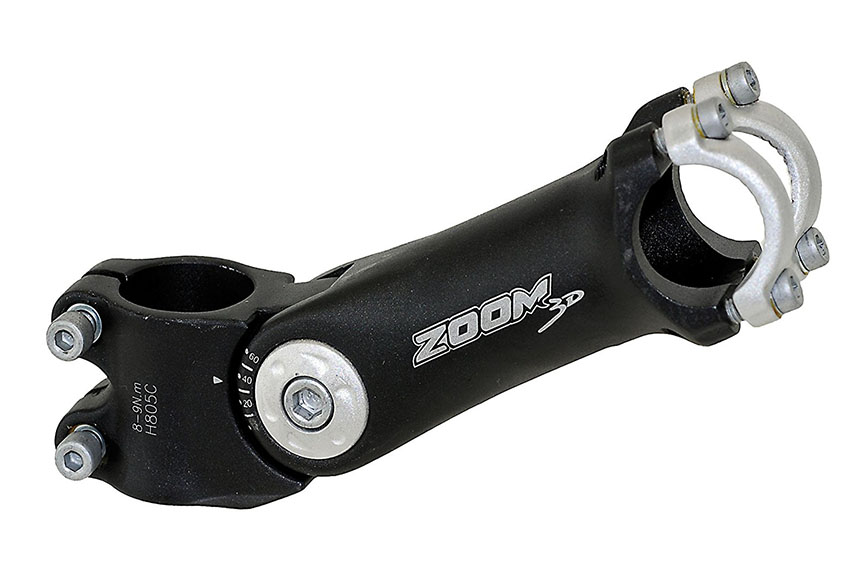
What Size of Bike Stem Should You Have?
Guide to Adjusting Your Bike’s Fit & Stem Sizing
Many bikers experience persistent bodily discomfort as a result of riding with pieces of bike hardware that are incorrectly fit for the size of their body. Many parts of the bike from the handlebars to the head tube, seat height and stem size play a factor in how well fit a bike is for an individual cyclist.
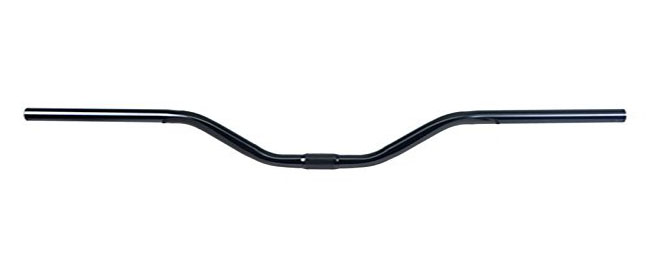 Here, we provide a guide for bikers to improve their physical alignment while riding, through customizing their bikes adjustable features, as well as to address the question of what size bike stem you should have.
Here, we provide a guide for bikers to improve their physical alignment while riding, through customizing their bikes adjustable features, as well as to address the question of what size bike stem you should have.
Incorrect Bicycle Size
Warning Signs and Ramifications
All too often, bikers can develop pain in their knees, lower back, neck, feet, and/or hands. No matter if you are a recreational biker or avid cyclist, riding your bike should never cause physical pain or discomfort—especially for those who bike regularly, any of these warning signs are indicative of a discrepancy in the fit of your bike. If left unattended, over time these issues can cause permanent damage to your joints and muscle ligaments.
Adjustable Bike Parts
Most bicycles are designed with several parts that are adjustable for a rider’s individual optimal fit. If the frame size is the wrong fit for your height, any amount of individual adjusting will not do much to help offset the ramifications of your body’s physical compensation for the incorrect fit, so, it is important that you are sure that your bikes frame is correctly sized for you.
For those who are positive that their bike’s frame is the correct size, there are three main adjustable features that will improve the fit of your bicycle.
● Seat Height
Often, the most overlooked attribute of a bicycle’s fit is in the height of the seat. For those who bike irregularly and recreationally, the height of the bike seat can be thought of as irrelevant. Nothing could be further from the truth.
The height of your bike seat determines the amount of leg extension that you have while pedaling. The less leg extension you have, the less power you pedal with. Decreased leg mobility means a decrease in the muscles that are available to assist in pedal strokes. This often results in premature fatigue and physical pain in the front of the knee.
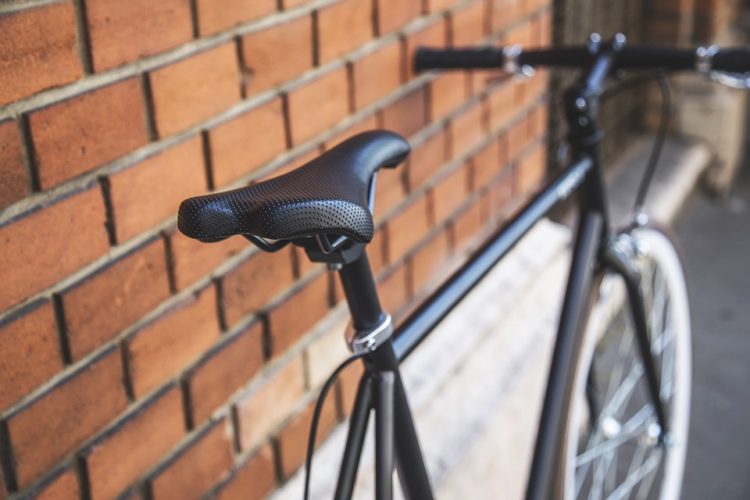 Adjusting your bike’s seat height is the easiest way to improve the quality and ease of your riding. Adjust the height until your leg is nearly straight with your foot on the pedal. When pedaling, your legs should come almost to their full extension on the bottom of the down pedal stroke. That way, you give the optimal amount of muscle engagement to the effort of propelling the bicycle and prevent your knees from becoming cramped.
Adjusting your bike’s seat height is the easiest way to improve the quality and ease of your riding. Adjust the height until your leg is nearly straight with your foot on the pedal. When pedaling, your legs should come almost to their full extension on the bottom of the down pedal stroke. That way, you give the optimal amount of muscle engagement to the effort of propelling the bicycle and prevent your knees from becoming cramped.
● Saddle Placement
If you are experiencing lower back pain or upper neck pain as a result of biking, this may be an indicator that you have to stretch your body out too much while riding. If you are sure that the frame is correctly fitted for your body, then you might want to try adjusting the saddle to a more forward position.
 With your hands on the handlebars, your hands should be almost under your elbows, providing structural seated support for your neck and lumbar.
With your hands on the handlebars, your hands should be almost under your elbows, providing structural seated support for your neck and lumbar.
● Handlebar Stem Height
The biggest indicator of a discrepancy in the size of your handlebar’s stem is the occurrence of feeling numb or tingly hands. Stem spacers can help to fix this discrepancy; however, they are often they are overused. Using an excessive amount of stem spacers is dangerous and irresponsible as it disturbs the handling and control of the bike.
Bike Stem Fit
Unlike the saddle stem height and placement adjustability, the handlebar stem is a fixed piece of hardware, which is fit for each bike. Although not adjustable, the handlebar stem is replaceable. The stem is the piece of hardware that connects the handlebars to the bike’s frame, and thus, is fitted specifically for the frame size, type, and design.
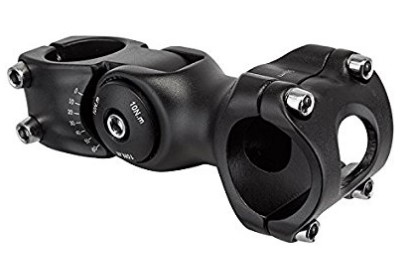 If you are sure that your bike is the correct frame size and it came with its factory parts, almost undoubtedly, the stem is of the correct length. However, if you have an older or previously-owned bicycle with a mismatch of hardware, it will be necessary to ascertain the correct stem size for the fit of your bike.
If you are sure that your bike is the correct frame size and it came with its factory parts, almost undoubtedly, the stem is of the correct length. However, if you have an older or previously-owned bicycle with a mismatch of hardware, it will be necessary to ascertain the correct stem size for the fit of your bike.
What Size Bike Stem Should You Have?
The size of stem you should have depends on the bike’s size, as well as your fit to the bike. Some of the common indicators of a sizing discrepancy in your stem include constantly shifting around on the bike and numbness in the elbows, hands, fingers, shoulders, or the upper back.
Bikers should not have a difficult time bending their elbows while pedaling and their hips should be able to remain stationary through pedal strokes. The easiest way to determine whether there is a problem in the size of your stem is to get someone to take a picture of you stop your bike from the side. This will allow you to determine if your alignment is correctly placed while in full stride.
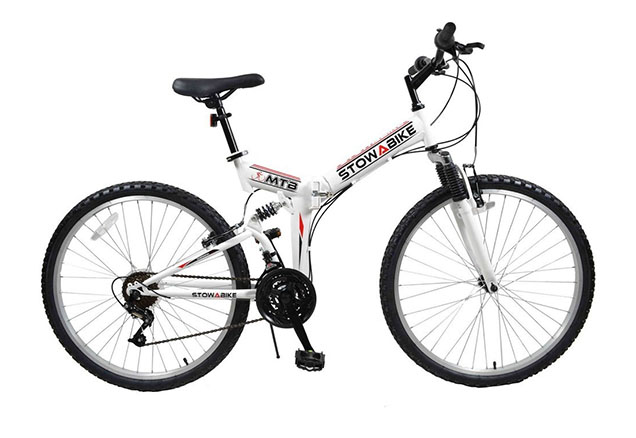 Road bikes and mountain bikes have different stem length requirements and features. For mountain bikers, a long stem will result in slower handling responsiveness and sluggish control. If the stem is too short, the mountain bike will have over-sensitive handling and sporadic control. With mountain bikes, control and handling play a key role in the bikes usefulness on varied terrain.
Road bikes and mountain bikes have different stem length requirements and features. For mountain bikers, a long stem will result in slower handling responsiveness and sluggish control. If the stem is too short, the mountain bike will have over-sensitive handling and sporadic control. With mountain bikes, control and handling play a key role in the bikes usefulness on varied terrain.
For road bikes, the stem length is based on the size of the bike frame. Most road bike racers have long stems, ranging from 110-120 millimeters in length, which allows them to stretch out their bodies to become more aerodynamic. Most road bikes have a stem that is on an angle parallel to the ground, which is often set at -17 degrees.
The vast majority of bikes have a mid-range stem size, ranging from 60-80 millimeters in length, providing a balance of handling efficiency and comfortable physical alignment. Advanced mountain bikers often opt for a short stem of about 40 millimeters, allowing for greater off-road handling and downhill momentum. The only way to be sure that you are getting the correct size is to be fitted by a professional, as a few millimeters of difference can have a significant impact on a biker’s body alignment and riding posture.

